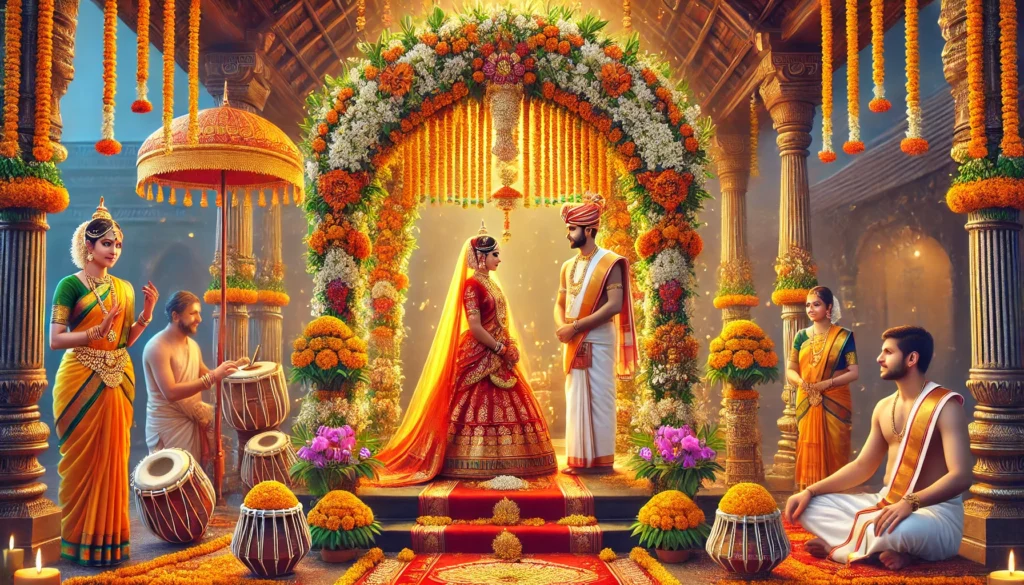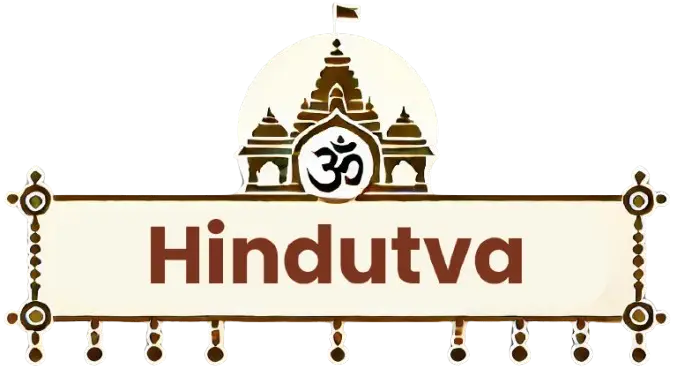Explore the intricate customs of South Indian weddings, blending tradition and modernity. Discover the significance of pre-wedding, wedding day, and post-wedding rituals, along with cultural nuances and contemporary adaptations.
Imagine the charm of a South Indian wedding—a vibrant amalgamation of colors, traditions, and familial bonds. The venue is adorned with intricate kolams (rangoli), the air is filled with the auspicious notes of nadaswaram and mridangam, and the fragrance of jasmine lingers everywhere. South Indian weddings are more than just ceremonies; they are a testament to a rich cultural heritage that has stood the test of time while gracefully adapting to modern sensibilities.

I take you through the essence of South Indian wedding customs, highlighting their spiritual significance, historical roots, and the evolving blend of tradition and modernity.
Pre-Wedding Rituals: The Foundations of a Sacred Union
Nischayathartham (Engagement Ceremony)
The journey begins with the Nischayathartham, a formal engagement where families gather to confirm the union. This ritual involves exchanging gifts, performing pujas, and deciding the wedding date based on auspicious timings (muhurtham). Rooted in Vedic astrology, this ceremony emphasizes harmony and alignment with cosmic forces.
Consider a Tamil family consulting their trusted priest to determine the perfect wedding date. The meticulous calculations of planetary positions reflect the deep belief in aligning human endeavors with divine will.
Panda Kaal Muhurtham: Seeking Divine Blessings
In this unique custom, the families pray to their deities, seeking blessings for a seamless wedding. The ritual is accompanied by offerings and heartfelt prayers, underscoring gratitude and reverence.
Sumangali Prarthanai: Honoring Married Women
This ritual celebrates the presence of Sumangalis (married women), believed to embody prosperity and harmony. The bride-to-be seeks their blessings, symbolizing her aspiration for a joyful married life.
South Indian Wedding Day Rituals: A Symphony of Sacred Customs
Kashi Yatra: A Humorous Tradition with Profound Meaning
Picture this: the groom, clad in a simple dhoti, announces his decision to renounce worldly life and embark on a spiritual journey. Armed with an umbrella and a walking stick, he begins his symbolic quest. The bride’s father intercepts him, convincing him of the virtues of marital life. This lighthearted ritual underscores the balance between spiritual pursuits and worldly responsibilities.
Oonjal Ceremony: The Swing of Harmony
The couple is seated on a beautifully decorated swing (oonjal) as family members sing traditional songs and gently rock them. The rhythmic motion of the swing represents the stability required in marriage. Elders feed the couple with banana slices dipped in milk and jaggery, symbolizing sweetness and nourishment in their marital journey.
Explore the significance of swings in Hindu culture.
Mangalsutra Tying (Thaali Kattu): The Ultimate Vow
At the heart of the wedding lies the Thaali Kattu, where the groom ties the mangalsutra around the bride’s neck in three knots. Each knot signifies a commitment: to her well-being, to her family, and to their shared spiritual journey. This sacred thread is more than jewelry—it’s a profound emblem of marital unity.
Post-Wedding Rituals: Welcoming New Beginnings
Grihapravesham: The Bride’s Auspicious Entry
As the bride steps into her new home, her feet are gently dipped in a mixture of kumkum and water. This ritual signifies her role as the harbinger of prosperity and happiness for the household.
Discover more about Grihapravesham traditions.
Reception: A Modern Celebration
Incorporating modernity, the wedding reception is a grand event where the couple meets extended family and friends. It’s a joyful blend of music, dance, and feasting, reflecting the spirit of togetherness.
Regional Nuances: Diversity Within South Indian Weddings
Tamil Weddings
Tamil weddings are marked by simplicity and adherence to Vedic rituals. Highlights include the Kashi Yatra and the exchange of garlands, symbolizing mutual acceptance.
Malayali Weddings
In Kerala, weddings are minimalist yet elegant. The tying of the thali and the exchange of garlands are central to these ceremonies.
Learn about Kerala’s wedding traditions.
Kannada Weddings
Kannada weddings feature customs like the Dev Karya, where the couple seeks blessings at a temple before the wedding. This reflects their deep-rooted spiritual connection.
Modern Influences: Adapting Traditions for Contemporary Lifestyles
Eco-Friendly Weddings
Many families opt for sustainable practices, such as digital invitations and minimalistic decor, to reduce their environmental footprint.
Destination Weddings
South Indian weddings are now celebrated in picturesque locales, combining traditional customs with modern luxury.
Simplified Rituals
Urban couples often prefer condensed ceremonies, balancing tradition with the fast-paced demands of modern life.
The Global Appeal of South Indian Weddings
The grandeur and meaningful rituals of South Indian weddings attract global interest. From the intricate kolams to the soulful nadaswaram melodies, these weddings are a sensory feast. They are not just a celebration of love but also a preservation of cultural identity.
Imagine an international guest witnessing the Kashi Yatra for the first time—amused and touched by the philosophical undertones hidden within the humor. Such experiences highlight the universal appeal of these traditions.
Author:
Neha Kulkarni – Journalist & Cultural Writer

